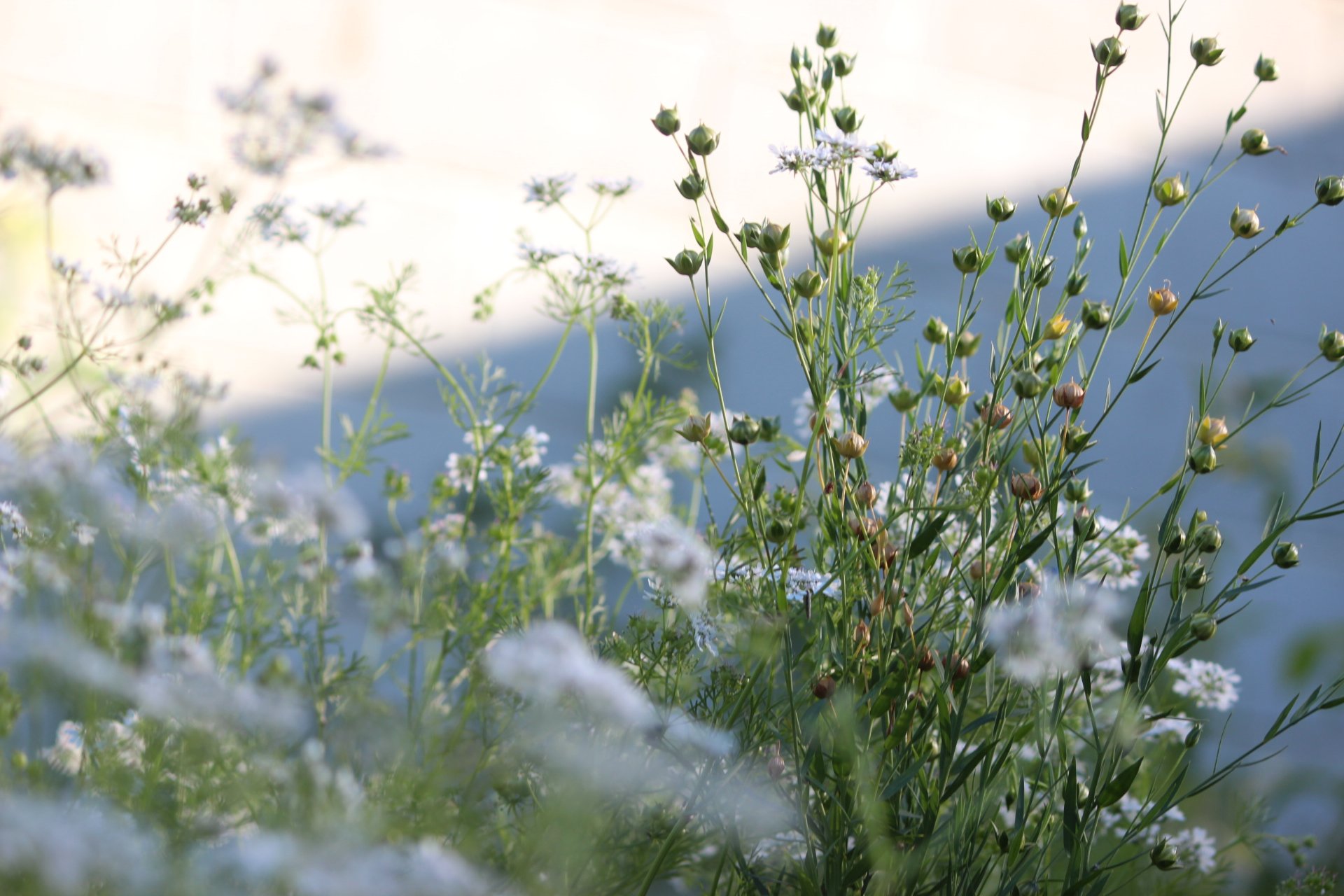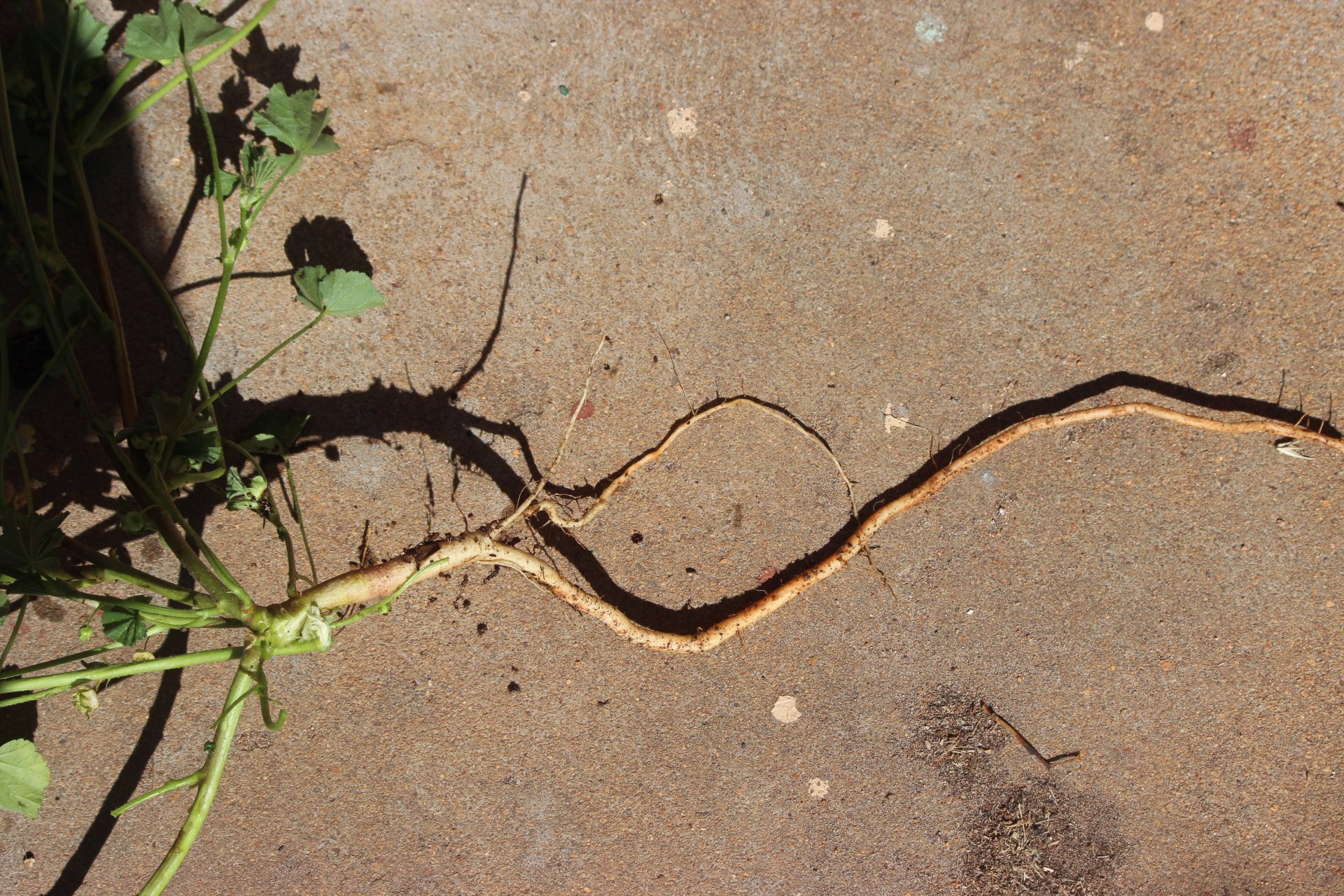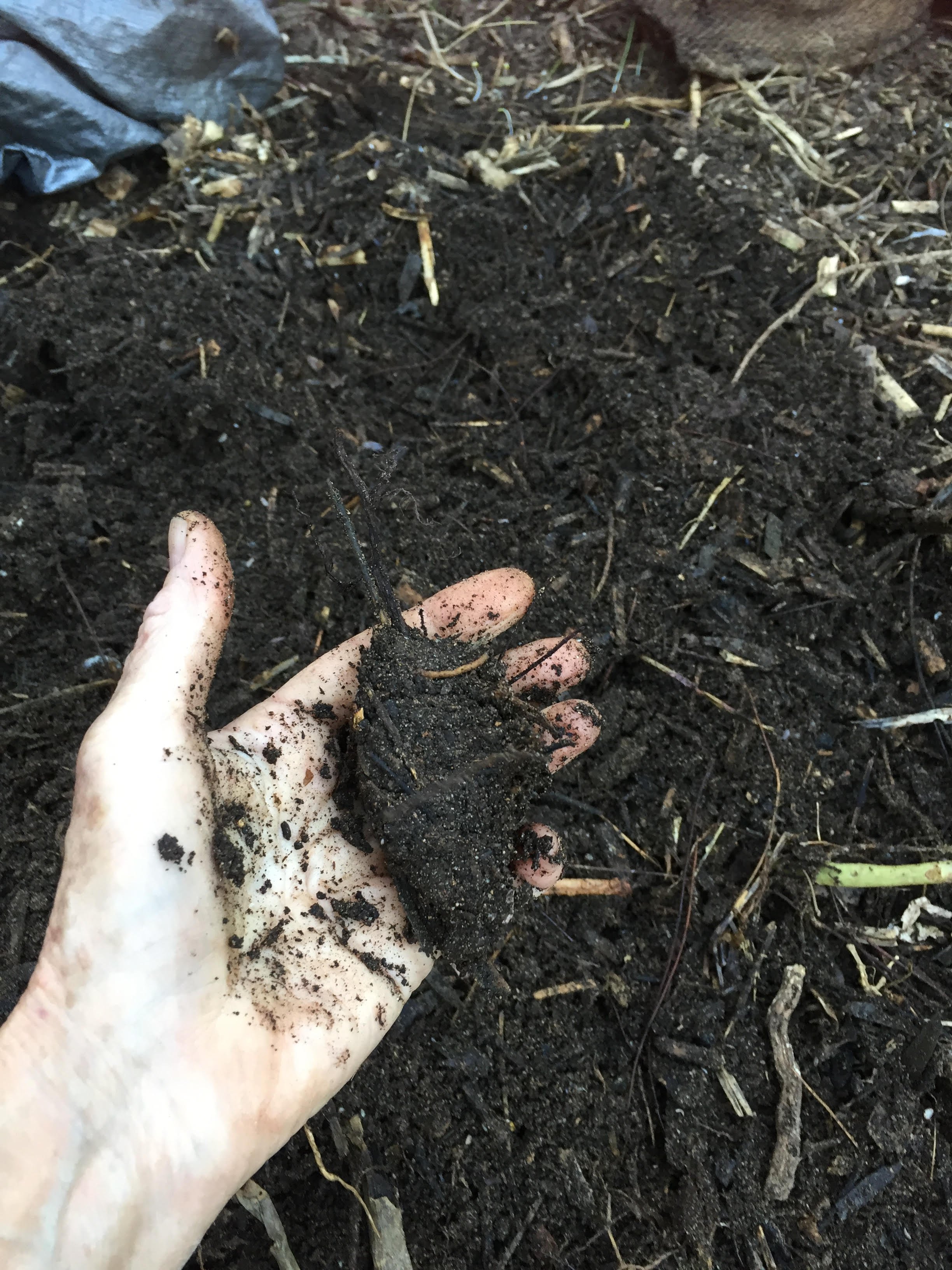The Regenerative Gardener
TEXT ONLY A video of this talk is available under the Regenerative Garden button on this website - or on Spotify.
Thanks to DPIRD and the WA Museum, Geraldton, for the chance to present on Regenerative Gardening. And to Sara Walker and the staff who organised the event for May 11, 2022.
They’ve called me an expert in the introductory notes. Anyone who loves gardening knows to ignore this description.
HOLISM
I prefer a garden that is an experimental space. My main aims are to find ways to work with the whole ecosystem and to garden for soil biological health on the understanding that if you have living soil, then the edible plants you grow will be packed with the nutrients that help to feed the microbiome of the gut.
I’ll concentrate on edible food and a few principles I have grasped as I have worked with the regenerative agricultural movement, by listening to farmers and many writers, including Indigenous knowledge system thinkers and their champions.
Where all the proponents of regenerative anything meet, is in systems thinking, holism. In terms of agriculture, this is what Peter Andrew’s calls a whole-of-landscape approach.
CONDITIONING THE SOIL
So, to my garden in Beachlands. And some of this is what I have been doing in the garden over the last few weeks, planting, and getting ready to plant, edible food.
But to back up a bit first…to condition the soil over the dry months – which can easily turn into 6 months in a bad year. I use two basic approaches: Creating compost piles and planting green manure crops.
My composting style is pretty loose. As the heat arrives in late spring, I decommission food growing spots, cut off plants at ground level, and layer loose piles of mulched branches and greenery on the spot.
My mulcher is my prize possession. I feed it branches from pomegranates, tea trees, mulberry, salt bush and olives to get the 70% green nitrogenous component of a pile.
And add animal manure and/or seaweed, and the 30% brown component (dead stuff like shredded paper is good), do a bit of tossing and keep the water up to the pile, letting it cook gently under a tarp.
Since working consistently with compost piles over the last few seasons, I find I can now put a spade with ease in most areas of the garden, the water holding capacity has improved..
Building compost piles suits me…but it is vigorous work and might not suit your skill set. And if you are constantly growing soil,you eventually raise the garden bed levels above the height of driveways, lawn etc, which can become problematical in a limited space.
GREEN MANURE
There are gentler processes to follow suing living cover crops, or the green manure method. This involves spreading straw and growing biodiverse plant species, to replenish soil.
Dr Christine Jones discovered that at least 8 different kinds of seed species are needed to trigger the dynamic biological expression known as quantum sensing. There is magic working with whole ecosystems - you can get an explosion of life, with results that are far richer than the sum of its parts. Rod will back me on this when we look at the broadacre canvas.
From field days in the wheatbelt I became interested in alfalfa (lucerne).
Alfalfa and Sorghum
It fixes nitrogen, is great to look at, survives summer with ease and will come back year after year. And flax or linseed. A beautiful plant, apparently it is a major fungal attractor. Chickpea is another sweet plant I’ve adopted.
Flax (or linseed)
I spent a season planting jars of seeds and grains from my kitchen cupboard – the superfoods that I never got around to eating.
Plants like Salt bush, vetiver grass, sorghum, Warrugal greens, sweet potato, wormwood, native perennial grasses are my current favourites for year-round soil conditioning.
Old Man Salt Bush
Vetiver
And these plants can be cut back all year – if fact I have learned that once you’ve started, if you don’t cut plants like vetiver back, they can die from the inside out…and salt bush get huge and leggy.
Vetiver grass, Sweet potatoes, Geraldton sunflowers, nettles, rocket, tomato, warragul greens are useful green cover in that they germinate as soon as there is any rain. These provide living roots in the soil and cover any bare ground - most survive with minimal attention and water through hot summers. They are a low effort way to have a garden.
vetiver as water saving ground cover for seedlings
I love sorghum – an agricultural plant that grows like sweetcorn. A patch of it can act like a living air-conditioning unit. I grew some to protect 50 seedlings through summer from the worst of the sun and wind. it worked. And seasons later I am still cutting into it for mulch.
WEEDS AND PLANT SUCCESSION
Central to all these processes, is rethinking the role of weeds.
From Peter Andrews, as part of his teaching about how water works with soil to build landscape, I learned about plant succession. That it is not about the plant species - it is about plant function.
If you strip the earth, nature will always cover it with plants and the first up are the pioneers. These plants are like the first people get up and dance at a party. They get the ball rolling, especially in low fertility areas that are compacted by cars or have been under pavement or lawn.
By welcoming these ‘weeds’, you demonstrate a core principle of a new and ancient way of working with the land – which is to work with what is there, to co-operate with, rather than trying to dominate, natural processes. I have learnt to not sweat the species, allow the evolution of plants to change the environment.
SAINT ELAINE
The superpower of so called weeds is being able to access all they need from soil that would defeat more delicate plants .
Dr Elaine Ingham – a grandmaster of the soil food web once said that ‘‘that there is no agricultural soil in Australia that lacks any mineral to grow crops.’ She has decades of experience with microbial activity to back this outrageous claim…also. there are no agricultural problems that cannot be fixed by natural biological processes …when I learned that there is a species of bacteria that can mitigate the effects of frost…I felt inclined to believe this..
CUT AND PASTE
Having said that: If you don’t want a particular plant, let it grow, just don’t let it go to seed. In all humility, you probably have no idea what it is doing for the soil microbiome. Let it do its thing, then cut it down at ground level and make it part of the nutrient mix in a compost pile.
MARSHMALLOW
8 I have a thing for marshmallow. In our house the only area that gets day long winter sun is right down the back of our block – it took me an embarrassing amount of years to work this out, although the clothesline should have given me a clue….
I faced a big monoculture of very well rooted marshmallows in this zone.
Marshmallow with Warrugal greens in foreground bottom left
So one summer I cut the marshmallow off at ground level, roughly chopped the plants and created a compost pile on the spot. Months later, with the coming of the rain, I spread the resulting compost out and planted carrots. And got great results.
I put it down to the parsnip style roots of the marshmallow creating space for proper straight carrots – but I now understand that marshmallow is a dynamic accumulator. It loves high nutrient soil and has an unrivalled ability to concentrate minute amounts of essential trace elements in their leaves. (this explains the forest of marshmallow you see in holding pens near sheep sheds)
Carrots like their nutrients well-composted, so another explanation is that the marshmallow did more than just aerate the soil, they added a good load of essential trace elements to the compost I created on the spot – creating a wonderful environment for carrots. Most of the work resulting in me getting a crop of carrots, was done for me by this serendipitous pairing of plants.
Marshmallow root
The one weed I haven’t warmed to is verbasina – I don’t like the feel of it or its creepy constant flowers, but look where it thrives! surely it is a dynamic accumulator. Apparently it has the capacity to make the soil unattractive for other plants. Can this toxicity be used to make a simple spray for unwanted plants?)
GRAZING ANIMALS
Of course, the best way of conditioning soil would be to graze a dense mob of sheep in a short amount of time, over your land. The idea that grazing animals can be managed as tools for landscape restoration in arid areas has been one of the most paradigm-busting pieces of the regen puzzle for me…
WORMS
For my backyard I considered chicken tractors, guinea pigs…but settled for the easiest of livestock: worms. I am trialling worm towers using adapted 20 litre buckets, . These pictures are courtesy of Barb and Bernard Howard (https://regenerativeleadership.com.au/)
I hope the one I’ve buried near my mango tree will be the trigger needed for her to produce mangoes.
WATER
I can’t really talk gardening without mentioning water. Suffice it to say you want to capture every drop of water that falls on your property.
The more organic matter, and therefore, organic carbon (carbon is a 58% component of organic matter), that you get into your soil, the more water your soils will be able to hold – and therein lies the expanded value of the business model currently trying to extract dollar value from soil carbon sequestration.
BUT: I got some new info yesterday, at the Drylands Permaculture nursery. Julie Firth told me something she had just understood, which is that if carbon dries out it becomes non-wetting. This is a big problem for her as she uses drip reticulation to save on water bills.
I don’t know how to dodge this beyond keeping growing areas small and dense, hand watering and using composts on the spot over summer.
But water tanks? They are essential. Why would you not capture rainwater?
A simple test to see if you have good organic content is to squeeze a handful of soil in your hand and see if it sticks together
SEED COLLECTING
I like to create cuttings from the plants I want to proliferate. Geraniums are my latest interest.
Collecting, cleaning, storing and then spreading seeds are activities I love above all others, and central to the way I garden. And every now and then I try to propagate seeds of plants that appeal to me.
Acacia victoriae
ACTION EDIBLES
Last week I shifted good soil to create a patch of thickly sown coriander, mizuna, and rocket. Other annuals will emerge and in a few weeks I’ll use scissors to harvest these as micro greens; as the season progresses the plants will be thinned out enough to become sizeable salad greens and ultimately go to seed. Which I harvest or leave to germinate later when conditions suit.
What grows while I think about what to plant…..Sunflower, Warrugal greens, rocket, nettle, mizuna
HOW TO MAKE PESTO
I like making pesto from random seed and nut components with between 8 and 12 different types of leaves, including tiny new sweet potato leaves, nasturtiums, bitter dandelions, the odd nettle, and a few leaves from medicine plants, like the native willow, snottygobble. Eating small amounts of bitter, alkaloid rich food, ties in with the return to the idea of food as medicine.
FOOD AS MEDICINE
Zach Bush, a US doctor, worked for years with cancer patients. He tells us that Chemotherapy solutions are made from compounds harvested from plants.
These are the same compounds, that if ingested (as nature intended) in tiny amounts every day from the food we eat, are essential to human health. But our ag. soils have been deadened, augmented, and poisoned by additives; they no longer contain the communities of microorganisms needed to grow plants with the full spread of micronutrients. And our tastes have changed, we eat less variety of plants and nutrients than our grandparents did. We get sick.
I am struck by the weirdness of a society that strips the soil of its capacity to grow nutritious food –reducing the resilience and health of its citizens– and then deal with the resulting symptoms by administering toxic doses of these very same compounds that have been destroyed through extractive agricultural practises.
It makes no sense.
PARADIGM SHIFT
The hardest thing is to talk about the change of heart I’ve experienced as I have started to consciously inhabit a more complex and alive space in my garden. Charles Eisenstein calls this the move from separation to interbeing. There are many ways to speak of this, each as meaningless as the next, unless there is a history of personal, experiential ‘ahha’ moments.
MORE THAN STRATEGY
This is not just change of strategy – if you are coming from a desire to connect with nature – one sentient creature to another - from a relational perspective - everything changes.
A big ahha moment for me was Tyson Yunkaporta’s work. In one example of many: he talked of Increase Ceremonies practised by tribal people…I initially thought, yeah yeah, of course you would give space to the nature spirits to bring you more yams, more catfish, more edible seeds….until he talked of the increase being about an increase in the relationships between all the beings of an ecosystem – and for indigenous people, everything is alive. An entirely different perspective. Takes you out of the single strand narrative to the garden as a living whole.
For Tyson, this new and ancient story, of being a part of nature, a custodial presence in a specific environment, dissolves the distinction between Indigenous and non-Indigenous: it is simply how all humans are meant to live.
UNEXPECTED CONSEQUENCES
From Holistic Management I understand that ecosystems produce causes and effects of an impossible complexity - way beyond my consciousness to understand. Therefore, any intervention I make into a living ecosystem has to come with the mantra: assume you are wrong, or to put it in a less harsh way, that an uncounted number of the consequences of your actions will be invisible to you. This inspires me to act with a degree of humility and curiosity.
RADICAL ACT
I believe managing a domestic garden is a radical activity. It is the best place to practise the idea that we are deeply connected to a world alive with non-human sentient beings. The garden is the one place I can think of where the mechanistic world is regularly challenged, because the invitation is to co-create with nature. Your capacity for curiosity, attention, joy, and spontaneity are the main tools you need in the garden.
READING
Tyson Yunkaporta: Sand Talk/ Robin Wall Kimmerer: Braiding Sweetgrass/ Dan Barber: The Third Plate/ Charles Massy: Call of the Reed Warbler ANYTHING read or said by Charles Eisenstein and Stephen Jenkinson















